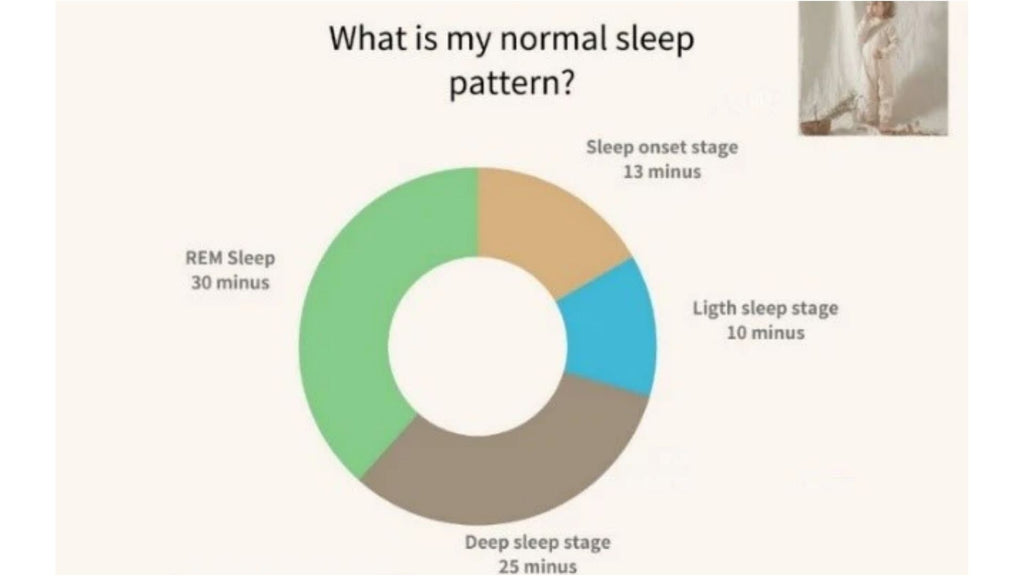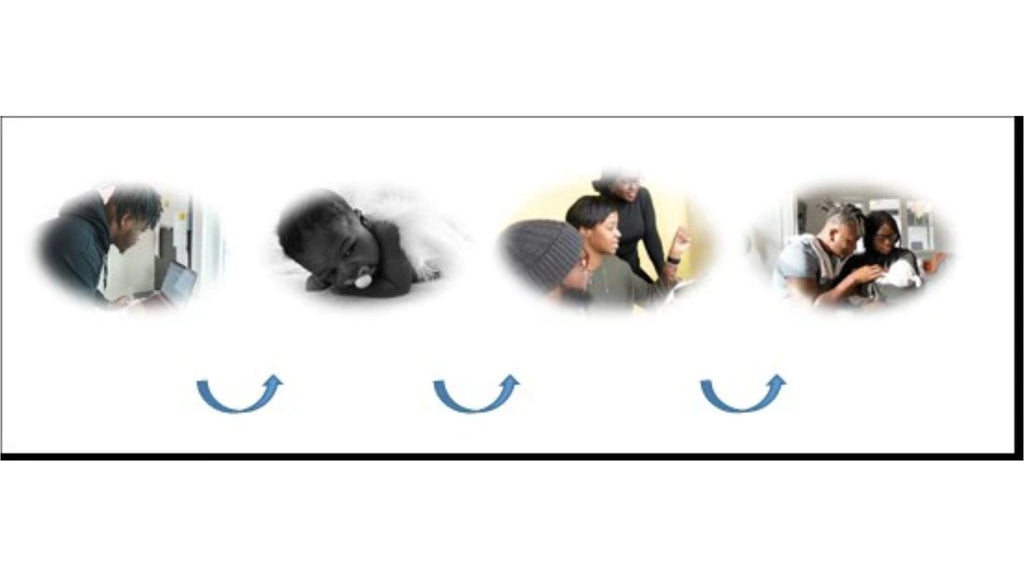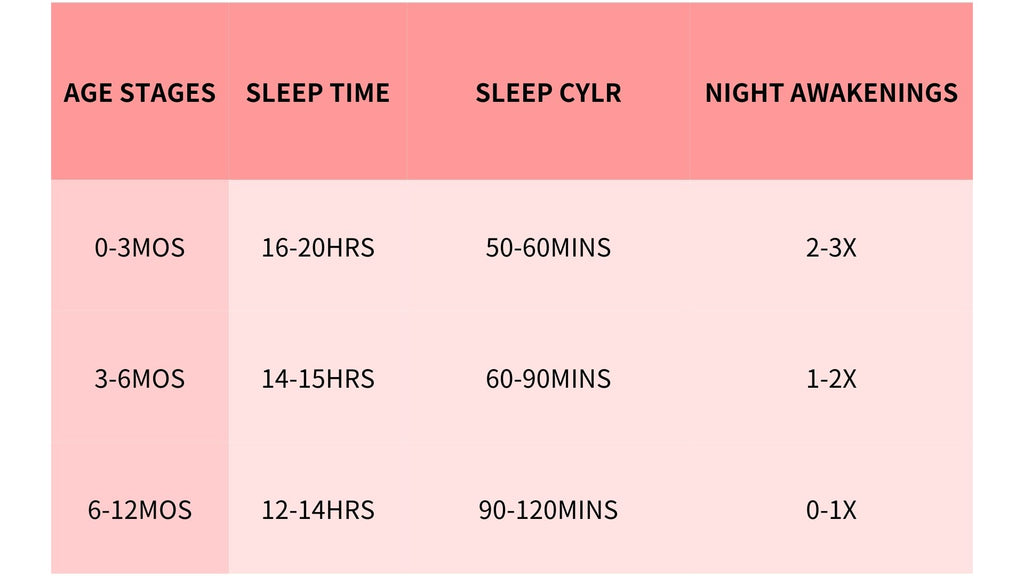
After entering into your world, I believe that your little love has been your “sleep timer.” You can drift into sleep peacefully only when your baby falls into sleep.
However, you may notice that your little love has experienced some “sleep regressions.” For example, they wake up frequently at night and find it hard to fall asleep.
Here comes a simple and effective solution-sleep sack. It can reshape your babies sleep habits. What a magic thing it is! It’s time to seek the wonder.
Feature and manifestations
Don’t worry. It’s a common phenomenon. And you just need to have an in-depth understanding of it, such as features and manifestations. Congratulations, the journey of seeking answers has begun for you. Let's read on.
What is sleep regression
As to the baby, it causes temporary sleep changes in a certain development stage. Your little one may have difficulty falling asleep, frequent nighttime awakenings, shortened sleep time, and so on.
In the following part, we’ll have an in-depth discussion.
When did the “first sleep regression” occur? When will it last

First, let’s focus on the first question. The answer is affected by environmental and lifestyle factors. Hence there is no definitive answer.
Affected by many factors, babies can experience it at any time, ranging from 4 months to 12 months.
Speaking of its duration, for most babies, sleep regression typically occurs within several weeks to months. Besides, some lucky dogs may miss it successfully.
When does the whole sleep regression end completely
Generally speaking, you can’t predict the time when your baby will recover from the sleep regression. It’s a pity that it will last for weeks and even longer. Fortunately, your babies return to normal at last.
Indicators of the sleep regression coming to an end

Many parents are concerned about a question: What is the destination of sleep regression? There are some clues as follows:
-
Stable sleep routine: Babies can have a sound sleep for several hours instead of waking up frequently.
-
Rapidly falling asleep: Without relying on excessive soothing, babies can fall asleep in a rapid way when bedtime arrives.
- Extended sleep cycle: With the infant gradually growing older, the sleep cycles lengthen. Instead of waking up frequently, babies can stay asleep for a long time.
- Self-soothing ability: Babies is able to acquire the skill of self-soothing, like thumb-sucking and soothing toys, etc.
- Improved sleep quality: As sleep regression comes to an end, your little love will experience deeper and more tranquil sleep. Moreover, they will wake up in a better mental state.
What is a true sleep regression?
Before coming to the point, you should learn the normal sleep patterns of babies first. The common features are as follows:
- Increased nighttime awakenings: Babies are liable to wake up at night. Don’t forget that your soothing and feeding is the “sleeping pill.”
- Wakefulness: Perhaps your babies having struggled with it for a long time. They may cry, toss and turn, or exhibit restlessness.
- Reduced daytime naps: As to the daytime nap, your little love will spend less time on it, even refuse it completely.
- Poor sleep quality: Easily distracted by external stimulation, your little love is more likely to enter the shallow sleep stage and become upset.
The above features are used for reference and you are advised to make judgments according to the specific situation.
Do all babies experience the sleep regression and how do I know if my babies will experience it
Not all babies experience the same sleep regression for each baby is unique. Yet sleep regression occurs in approximately 70% of babies.
As parents, how to know whether my babies are the victims of sleep regression?

Firstly, let’s learn about the normal sleep patterns of babies. The modes of normal sleep patterns are as follows:
-
Sleep time: Your little loves require a lot of sleep time to store energy for their growth and development. Initially, their sleep time is about 15 hours. And the time will be less as they grow up.
- Sleep cycle: It includes two parts: the deep sleep stage and the shallow sleep stage. During the shallow sleep stage, they wake up frequently. However, the situation is quite contrary in the deep sleep stage.
- Nighttime awakening: It is a common situation for your babies, for they require frequent feeding, diaper changing, and soothing.
After the introduction of normal sleep patterns, you may wonder about the specific changes for your babies. Now make sure that your head has kept up with the eye!
Here are the specific steps:
- Awakening times: During sleep regression, the frequency of nighttime awakening may increase. You can record the data and compare it to the previous situation.
- Difficulty falling asleep: As a sign of sleep regression, you should be cautious when your babies have difficulty falling asleep. You can observe the pre-sleep behaviors.
- Changes in sleep time: During sleep regression, the baby's sleep schedule may change. Record your baby's total sleep time and compare it to the previous sleep patterns.
- Sleep quality: Take a look at your babies. They may easily wake up and toss and turn. Well, it also indicates the sleep regression.
How many sleep regressions

According to usual observations, infants typically experience 2-3 sleep regressions. The actual situation varies depending on the individual difference.
"Milestone" significance
Sleep regression is a part of babies’ physical development. Although it may bring some challenges, it is a significant symbol of babies’ growth.
Firstly, as sleep development advances, the sleep quality of babies will improve. For example, it prolongs nighttime sleep, reduces the times of nighttime awakenings, and establishes a more stable schedule.
Secondly, during this stage, without relying on external assistance, babies learn to fall into sleep independently and enter into the adult-like sleep pattern.

In a word. sleep regression is an important milestone in the development of babies. During this stage, babies’ sleep patterns plus requests change significantly, which has a profound impact on babies.
Classified by age (common symptoms, reasons, duration, solutions)
After reading this, I believe that you have understood the sleep regression initially, but it’s far from enough, as your babies’ sleep patterns change as they grow up.
We’ll lead you to the sleep regression stage by age (3-6 months sleep regression, 6-9 months sleep regression, 9-12 months sleep regression).

Reasons
The reasons of sleep regression are as follows:
- The persistence of separation anxiety: Disturbed by it, babies are prone to wake up at night in the absence of their parents.
- Developmental milestone: Babies continue to grow up and acquire new motor skills, such as standing, walking, or climbing furniture. This behavior is the main reason for night awakenings.
- Teething: Babies’ teeth are still growing. The process probably causes discomfort or even aches, which reduces the sleep quality of babies.
- Circadian rhythm adjustment: Babies are likely to set up a more stable daytime and nighttime sleep cycle, but this process may cause some temporary changes in sleep patterns.
Duration
It varies based on the individual differences of babies, ranging from weeks to months.
Common symptoms
- Frequent night awakenings: It’s probable that babies wake up at night on many occasions, for they need your comfort and company.
- Difficulty in falling asleep: Babies may spend more time falling asleep. Be patient! You just need to provide soothing measures and other help strategies.
- Decreased sleep time: Generally speaking, babies’ sleep time is shorter than before.
- Irregular sleep patterns: Babies can’t wake up and fall asleep at a fixed time.
Solutions
- Creating a stable sleep environment: In order to let your babies fall asleep quickly, you’d better use blackout curtain and “white noise.”
- Establishing a regular bedtime routine: There are some choices for you: bathing, reading story books, and doing some relaxing activities.
- Soothing and bonding: You ought to respond to your babies’ needs and offer soothing and bonding. It is sensible of you to adopt some soothing measures.
- Maintaining a day-night rhythm: It is a regulatory mechanism like a clock inside babies to alarm them of bedtime. I’m sorry to tell you that your little one hasn’t acquire this ability yet. Don’t worry. It would be help if you let your babies move freely in the daytime to stimulate their senses. As evening comes, you’d better create a quite environment.
Here is a case of sleep regression:

As a father, Jason is worried about his baby Sarah who is six months old, had previously been sleeping well. However, now Sarah has been having trouble falling asleep and she wakes up at night over and over again.
Jason adopted the following procedures to investigate further:
1. Observing sleep patterns: Jason recorded Sarah’s sleep routine, times of night awakenings, sleep time, etc.
2. Reading about sleep regression: Jason conducted in-depth research on sleep regression.
3. Consultation with a pediatrician: Jason made an appointment with Sarah's pediatrician. Then he shared his observation outcome with the physician.
4. Establishing a consistent bedtime routine: According to the collected information, Jason decided to set up a consistent bedtime routine for Sarah, consisting of warm baths, gentle massages, and reading soothing books.
5. Providing comfort and reassurance: When Sarah woke up at night, he tried gently rocking, patting her and giving her a pacifier to help her fall back to sleep.
As time went by, Sarah’s sleep patterns improved gradually. She has a sound sleep now.
The ultimate strategy: the magic application of sleep sack

Apart from the above solutions, there is another magic tool waiting for you as well. Who is it? That is the sleep sack for babies. What is it? They are specially designed for babies.
Made of soft, cozy materials, it is similar to pouch-like structure for infants to lie in. Besides, it can be combined with the above strategies to provide your babies with an ideal sleeping environment.
The magic of sleeping sacks —— building a stable sleep environment
Above all, it provides your babies with soft material. What’s more, it can maintain your babies’ sleeping position, preventing them from rolling over or rolling out of bed.
The magic of sleeping sacks —— establishing a regular bedtime routine
As a regular nightly ritual, the action of putting on the sleeping bag sends a sleep signal to your babies, helping them fall asleep and establish healthy sleep habits.
So what can you do?
1. You should make putting on the sleeping bag a regular part of babies’ daily routine.
2. Before putting on the sleeping bag for your babies. You can arrange some activities: parent-child interaction, gentle massage and soothing, etc.
3. Try to put on your infant's sleeping bag each night in the same way and order.
The magic of sleeping sacks——providing security and comfort
- Offering a swaddling feeling: Similar to the environment of uterue, the sleep sack can wrap around the baby's body.
- Comfortable touch: Certainly, it offers your baby warmth. Besides, it huddles your baby gently. The soft fabric of the sleep sack even made your babies can’t put it down.
- Preventing sudden movements: Sleeping bags can restrict the movement of babies, thus reducing their sudden movements during sleep.
The magic of sleeping sacks——maintaining a day-night rhythm
- Establishing a sleep signal: Babies are unconscious about time. Consequently, you should arrange a special time for your babies to wear the sleep sack. As a result, your little one will realize that it’s time to sleep.
- Providing a comfortable environment: With the help of the sleep sack, babies feel at ease. In this way will your babies have a better sleep experience.
- Adjusting the circadian rhythm: In simple terms, you should let your babies put on the sleep sack at a fixed time to establish a regular sleep routine manually.

At the end of the article, I sincerely introduce
Kaiya Baby to you. No matter product or service we offered, we’ll try to ensure your satisfaction.
If you find this information helpful, it’s considerate of you to share it with people around you. If you have any doubts, please comment below.












